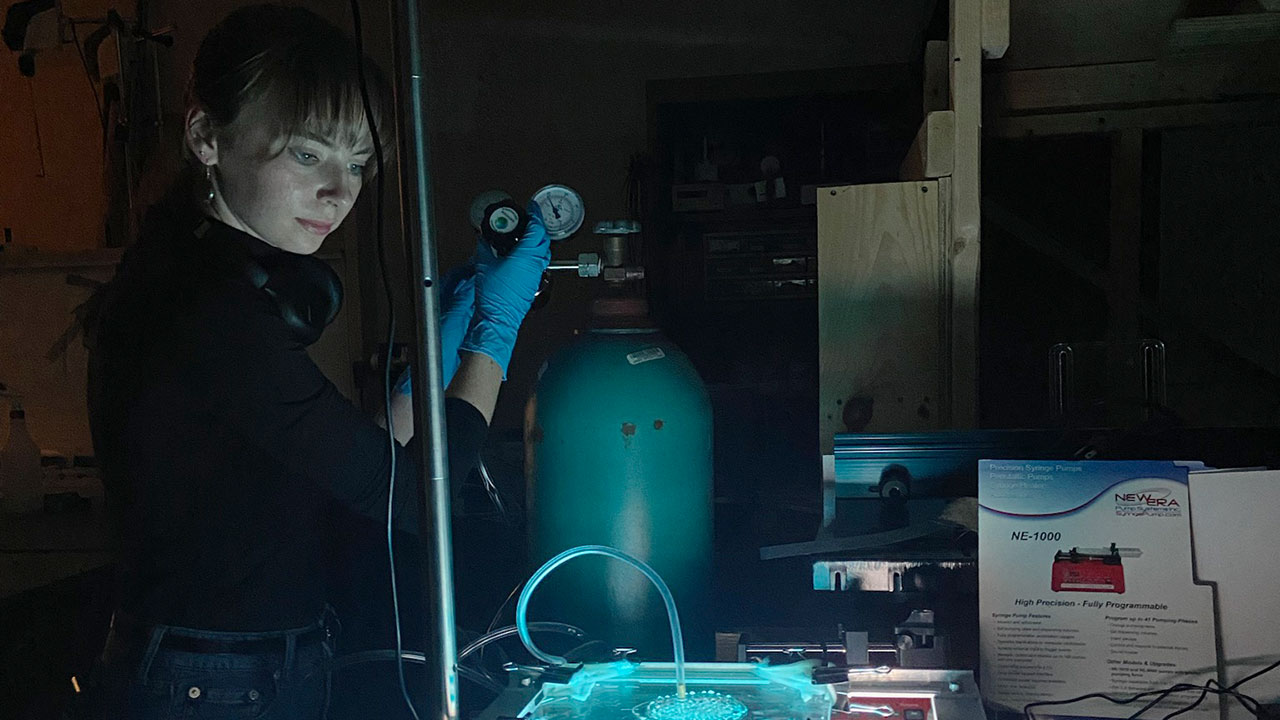Rare corpse flower begins blooming at UNG

Kayla Folds finished her final exams April 29 and immediately turned her attention to a unique endeavor made possible by a shiny, stinky and rare botanical occurrence.
A titan arum, also known as a "corpse flower," began blooming the same day. Though it didn't fully bloom, visitors can still view some of the flower. Folds will help students and community members learn more about the flower named Stephen. Corpse flowers, which usually grow to between six and eight feet, generally only bloom about every eight to 10 years.
UNG encourages the public to come to the greenhouse, which is located between the Health and Natural Sciences (HNS) building and The Commons residence hall complex at UNG's Dahlonega Campus, to see the corpse flower in bloom. Free visitor parking is available at the corner of Sunset Drive and Main Street.
"I personally enjoy being able to take other students in and show them the plant and talk about it," Folds, a senior from Jasper, Georgia, pursuing a degree in biology, said. "It also gives them a chance to see what else the university has to offer, like our greenhouse. Stephen has really brought a lot of attention to the greenhouse so other students can see what we have going on."
Folds has served as a student worker in UNG's greenhouse since 2022 and also takes the lead in caring for plants in the HNS building at UNG's Dahlonega Campus.
The plant's name comes from its hideous smell.
"It smells like rotting meat. It's a very foul odor," said Dr. Ashlee McCaskill, a professor of biology who supervises the student workers who take care of the corpse flowers, one of which bloomed in 2020 and garnered wide attention regionally. "The smell is used to attract carrion beetles that act as pollinators and trick the beetles into thinking it's meat. They pick up pollen and then go to another corpse plant and deliver pollen."
In addition to their noticeable smell, corpse flowers each have hundreds of flowers in their base.
"It's the largest inflorescence on the planet," McCaskill said.
McCaskill also serves as director of UNG's Environmental Leadership Center.
According to the U.S. Botanic Garden, "This plant is native to the tropical rainforests of Sumatra, Indonesia, and first became known to science in 1878. In its natural habitat, the corpse flower can grow up to 12 feet tall. Public viewings of this unique plant have occurred a limited number of times in the United States."





